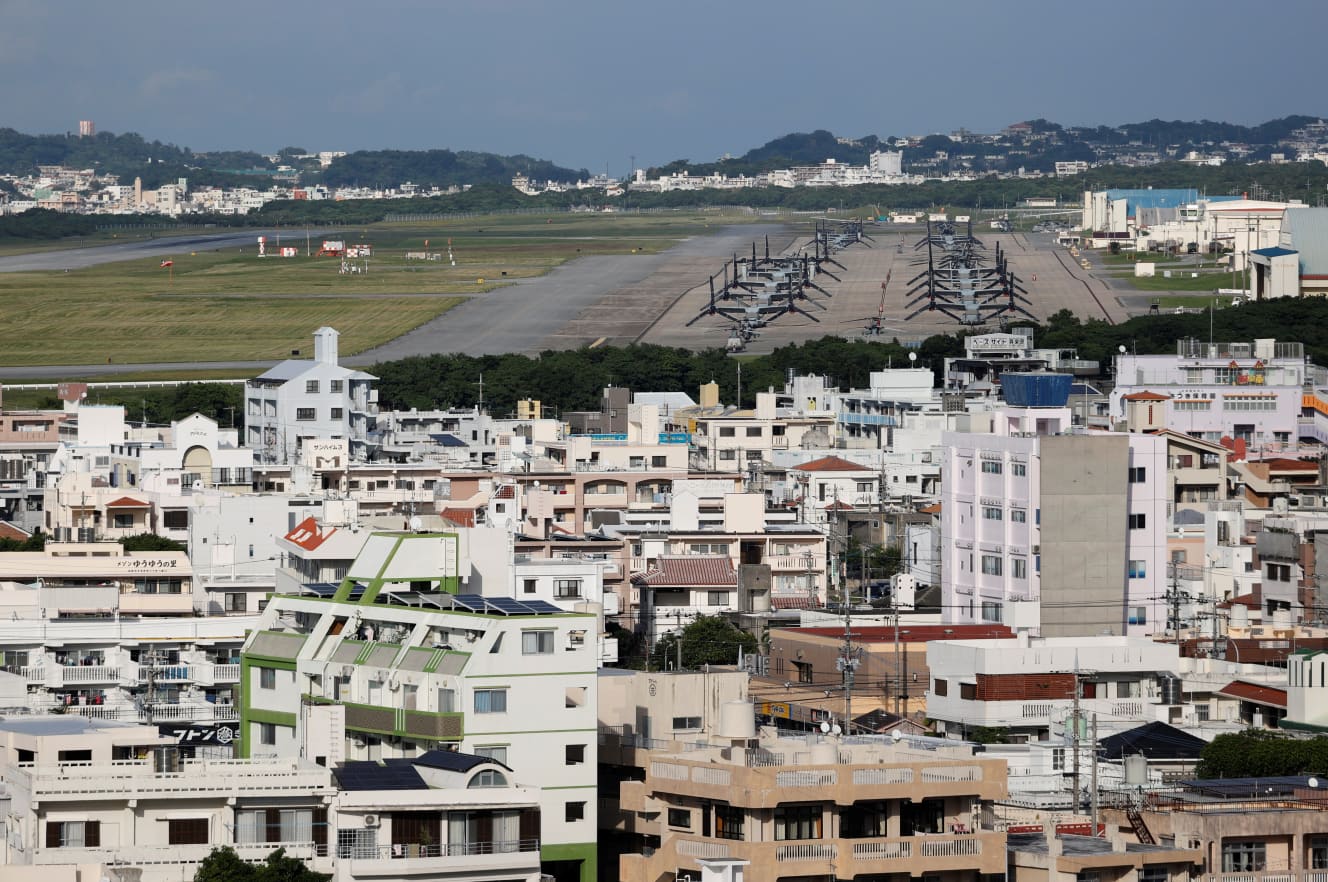A “Simulated Battlefield” Next to a Residential Area in Naha, Okinawa Sparks Issue
~A local reporter's look at the depths of the mysterious "training

No War No War (No War)! No War! No more Base! (No more base!
No more bases!” People were shouting at a building protected by barbed wire. The metallic clang of placards hitting the barbed wire echoed in the air. Facing us were American soldiers armed with rifles.
This is the U.S. military’s Naha Military Port (Naha Port Facility). This is the U.S. military’s Naha Port (Naha Port Facility), a base located in the center of Naha City, the capital of Okinawa Prefecture. It is located in the middle of the city, within 1km of Naha Airport, the baseball stadium used by the professional baseball Giants for their spring camp, and the Okinawa Prefectural Government.
At this base in the city center, the U.S. Marine Corps conducted a training exercise for “overseas humanitarian assistance, embassy security, and evacuation of non-combatants” from February 8 to 12. The scene at the beginning of this article shows the “training” as seen from outside the fence.
The Osprey, an odd-shaped transport aircraft, and transport helicopters frequently took off and landed. U.S. soldiers wearing night-vision goggles walk around the area even at night. A battlefield-like scene suddenly appeared at the idle military port, which is not usually frequented by ships.
The confrontation with the “protesting citizens” staged by U.S. military personnel seemed to be an embassy security drill. Outside the fence, Okinawan citizens were protesting, not acting, but really holding placards that read “NO BASE.
I wonder if that rifle will eventually be pointed at us.
Mr. Ryuzo Shimojo, a resident of Naha City, who had visited the site for five consecutive days to monitor the “training,” said, “The rifle will eventually turn on us. Through the fence, I was exposed to the sound of a large transport helicopter landing near me, tilting and swaying, and I could clearly see the rifle under the arm of an American soldier as he came down.
I could clearly see the rifle held by a U.S. soldier as he descended. It makes me angry.
Okinawa Prefecture and the local city of Naha opposed the drills, but the U.S. military refused to listen. Governor Denny Tamaki expressed his displeasure.
Denny Tamaki, the governor of Okinawa, expressed his displeasure: “They are suddenly starting to use the base in ways that were never possible before.
“Return to Japan 50 years after 50 years after Japan’s return to Japan and 77 years after the war It has been 50 years since Japan’s return to Japan and 77 years since the end of World War II. “In Okinawa, 50 years after the reversion to Japan and 77 years after the end of World War II, if (the U.S. military) decides freely and arbitrarily, (training) will be carried out. No information is conveyed to us at all.
This land is provided to the US military by the Japanese government as a “military port. It is neither a training ground nor an airfield. The agreement between the Japanese and U.S. governments on the terms of use (commonly known as the 5.15 Memo) also states that the main purpose of the land is for “port facilities and oil storage.
At a press conference, Chief Cabinet Secretary Hirokazu Matsuno was asked about this point.
Chief Cabinet Secretary Hirokazu Matsuno, when asked about this at a press conference, said, “It is considered to be a drill in which the use of the port is assumed, and it is in line with the main purpose of the facility.
This is in line with the main purpose of the facility. The theory is that the port will be used for “evacuation of non-combatants (U.S. citizens, etc.),” so it is OK. Mr. Matsuno, who also serves as “Minister of State for Okinawa Base Burden Reduction,” is not the only one who has been involved in this “citywide raid. But he ignored the “burden” of this “drill that suddenly started in the city.
The Japanese government has been doing that all along. Instead of confronting the U.S. military to protect Okinawa’s human rights and livelihoods, it has confronted Okinawa to guarantee the freedom of action of the U.S. military, blocking even a modest request to at least treat Okinawa like the mainland. It would have been better if Japan had been able to negotiate directly with the U.S. military before it returned to Japan. Such lamentations are leaking from Okinawa on the 50th anniversary of its reversion.
Interviewed and written by Takeshi Abe, born in Tokyo in 1974. Editorial board member of the Okinawa Times. He is the author of ”


Interviewed and written by: Takeshi Abe Photo: Okinawa Times (1st point) Reuters/Afro Keizo Mori/Afro